Many music schools require every music student to learn piano and pass a basic piano proficiency exam after their second year of music school. There’s a great reason why almost every musician has to learn to play the piano. It’s the most logical choice.
The piano is the easiest to learn music with for a couple of reasons. There’s no learning curve to playing a note, the notes repeat themselves up and down the keyboard, it’s easy to see intervals, scales, and chords, and all of the accidentals are represented by the black keys.
9 Reasons Why The Piano Is The Easiest Instrument To Start With
As I said earlier, there are so many reasons the piano is such a great starter instrument for any music lover. Even if you’ve never imagined yourself as a pianist, it’s the one instrument worth learning for anyone considering music.
It’s simple and easy to start learning on top of being one of the best-sounding instruments. One of the clearest reasons to me is the one will start with, which has to do with how the notes on it are organized.
1) The Layout is Easy To Understand
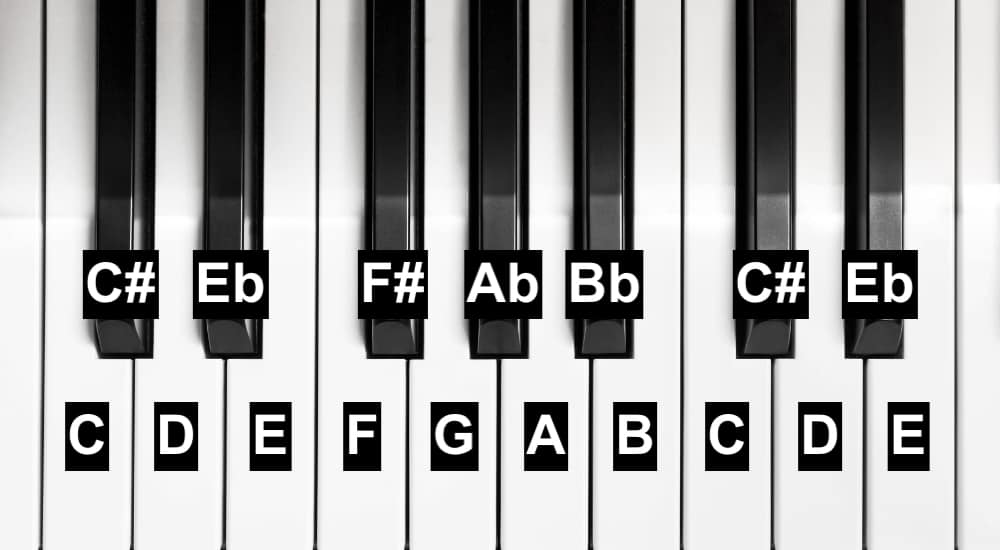
In a nutshell, the piano clearly lays out all 12 notes of the chromatic scale. These 12 notes make up all of the notes in our Western music system. The notes on the piano are divided into white keys and black keys. All of the 12 notes repeat once the cycle is finished.
Let’s take a look at the black keys. Do you notice a pattern on the black keys through the length of the piano? If you can’t see it, think of the number of black keys in groupings.
There is a basic pattern of two sets of black keys, the first in a group of two and the next in a group of three. Those keys are your accidentals. Don’t worry about those yet, just know that the sets of two and three black keys are repeated throughout the entire piano.
Now, look at the white keys. Find, the first white key next to a set of two black keys. That’s C, and it will always be the note for the white key right before a set of two black keys. The C that’s right in the middle of the piano is called middle C for a reason. Interestingly though, the piano starts with A and not C for some reason.
All 88 keys on a standard piano are simply just these twelve notes repeated over and over again. The image that I showed just a few paragraphs below of the piano keyboard repeats itself approximately 7 times up and down the keyboard.
2) Producing A Proper Note is Automatic
![Child Playing Piano - Why is Piano the Easiest Instrument to Start On? [ANSWERED]](https://producersociety.com/wp-content/uploads/2022/04/Child-Playing-Piano-Why-is-Piano-the-Easiest-Instrument-to-Start-On-ANSWERED.jpg)
This is one of the joys of piano playing. It automatically plays the right note for you and the sound isn’t muted, unlike what will happen if you play the guitar incorrectly (you can learn both at the same time by the way using my guide).
Unlike other instruments, which could take years to master the principles of making a sound, the piano is designed to make the correct tone by simply pressing the keys. Imagine never struggling to play a note. It’s not hard to understand why the piano is a great beginner instrument.
Beginner piano students are already playing their first song by the end of their first lesson, and it sounds decent. It might be “Hot Cross Buns” or something like that, but it’ll at least sound like music.
This is because they simply need to press down on the keys to make a sound. There’s no struggle with getting a new note out each time you want to play a song.
You don’t even need a teacher if you are a self-learner. All you have to do is know which keys to play in order, and you can be playing your first song before you know it.
3) You Can See Everything You Play (Including Intervals, Scales, and Chords)
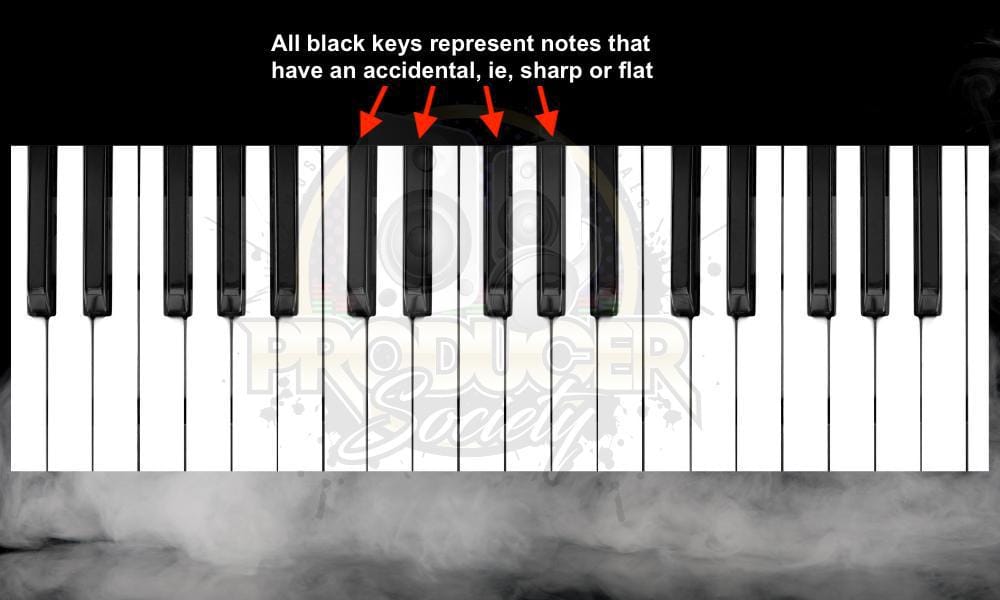
Being able to visualize what you are doing is so important to the learning process. The piano provides the perfect fit for someone looking to understand the music they are playing in a visual context.
This provides you with many benefits, especially if you can visualize the keys without playing. Take the time to learn piano by looking at your hands while playing and then imagining that same image in your head.
Comparing the guitar and the piano is a useful exercise in this regard. For instance, a perfect 5th interval can be either on one string or across several strings. The same thing can’t be said on the piano. It’s the same distance every single time.
Punkademic’s Music Theory Comprehensive Complete Course (via their All-Access Pass) is a good way to learn this if you need a teacher.
The piano has an “evenness” to it, in the sense that you can clearly see the triads (which are the fundamental building blocks of music). If you want to make a major triad minor, just play the black key as the third instead of the white key.
Of course, it gets more complicated than this, but there is a certain visibility and clarity to the piano that other instruments don’t have.
A big part of this has to do with the fact all notes are the same on the piano. A C-note is the same over and over again. It’s not like on the guitar where it could be on the 8th fret of the E-strings or on the 1st fret of the B string.
4) Piano Has A Very Large Range (In Pitch)
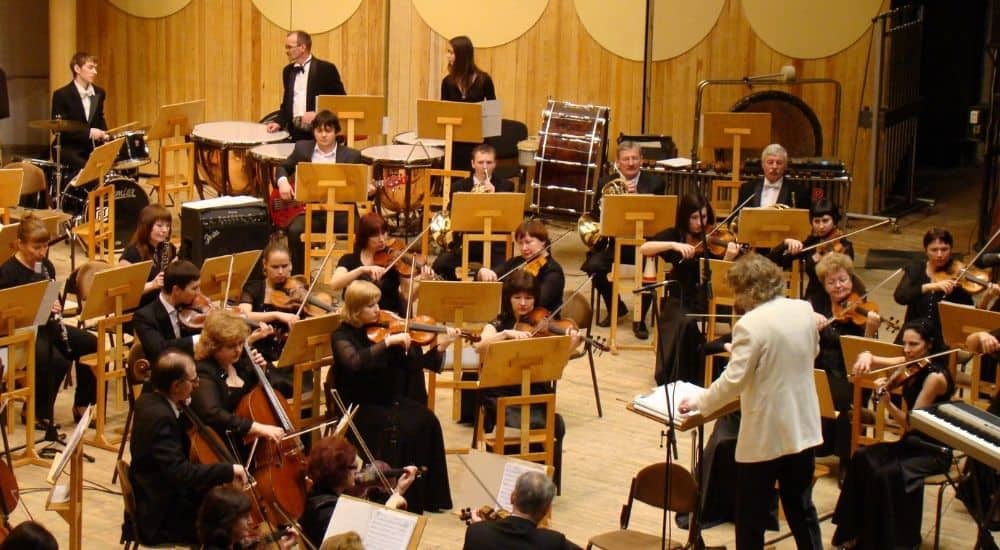
With 88 keys, the piano has a very large range that allows for a wide tonal expanse. The piano range is from A0 to C8. In simple terms, the piano can sound really low, really high, or in the middle.
This means that you can imitate the low melodies of the tuba all the way to the high piccolo which pierces through the orchestra. Having a wide range gives you plenty of room to explore. If you’re interested, you can read more about the different ranges of the orchestra here.
Unlike other instrumentalists within an orchestra, a pianist is not limited in terms of their range, and can artistically express themselves without having to worry about not being able to produce the sound because of the difficulties of producing sound in the extreme registers.
5) The Most Common Chords Are Very Easy to Replicate Across Octaves
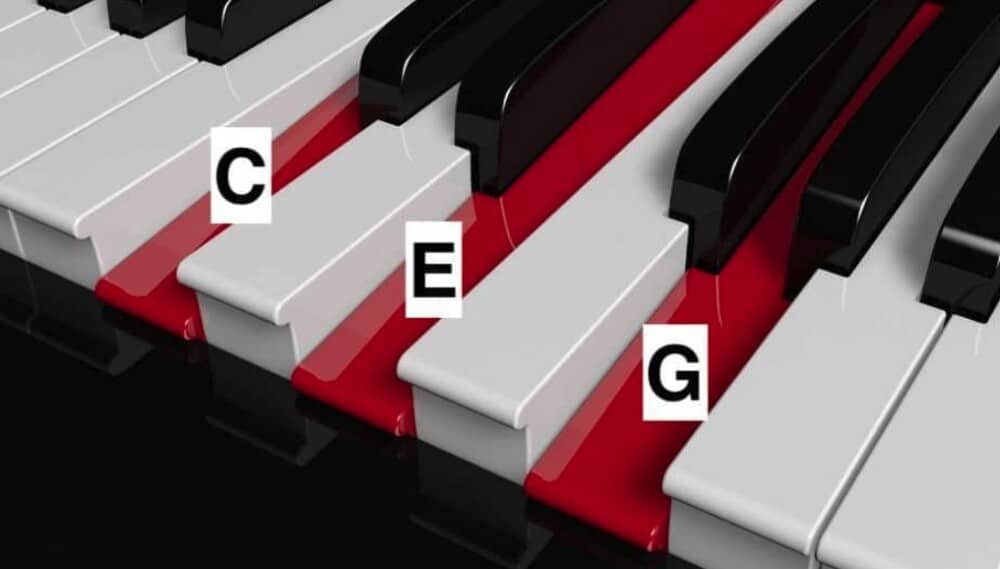
You can show your students their first chords using an easy-to-learn shape. Apply that same basic shape to other chord types. It can be really simple, even your youngest students could do it.
Show them the fingering 1 3 and 5 which is transferrable to other chords if you simply just shift your hand position in either direction. Try it out for yourself over just the white keys, and you’ll get a variety of different chord types including the B diminished chord.
What’s really nice about this is that there’s no worry about having to struggle with different fingerings when playing the different chords in C. Instead, you can apply the shape, and have any beautiful three-note chord to riff off of in the key of C.
You could make the same case about the guitar regarding some of the 6-string chords, but on the piano, it’s super easy to expand, extend, alter, and embellish these basic chords once you’ve figured out the basics.
6) The Pentatonic Scale Can Be Played Easily
![Pentatonic Scale - Why is Piano the Easiest Instrument to Start On [ANSWERED]](https://producersociety.com/wp-content/uploads/2022/04/Pentatonic-Scale-Why-is-Piano-the-Easiest-Instrument-to-Start-On-ANSWERED.jpg)
One of the most commonly used scales in all of music is the pentatonic scale, particularly the minor pentatonic scale. Nearly every guitarist uses it and overuses it to the point where it has almost become a meme by now. Either way, it’s super easy to play on the piano right off the bat, although, just in two key signatures.
Earlier, we talked about the black keys which came in sets of two and three. Try playing anything just using the black keys. Don’t try to play any of the white keys for this exercise.
You can play around with this yourself and explore different sounds. Only play the black keys, and you won’t play a wrong note. This is because playing just the black keys is the same as playing the pentatonic scale, a five-note scale that has no wrong notes.
The specific name of this scale is the F# major pentatonic scale or the Eb minor pentatonic scale, but what really matters is that anyone can play it on day one. The music theory behind this is simply a tool you can use to help you expand your piano skillset.
7) Knowing The White Keys Will Give You the Major Scale
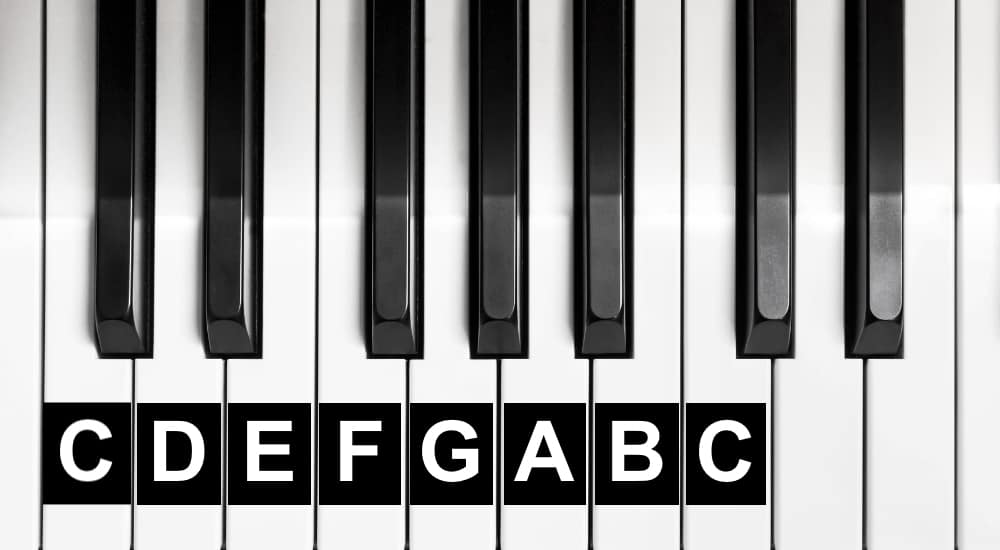
The white keys are the basis of the C major scale. Start on any C, which we learned about earlier, and simply play each key to the left until you reach the next C. This should sound pretty good to your ears.
Guess what? You just played the C major scale. Like I said in my guide on how to learn music theory, try playing different combinations of the notes of this scale and see if you can create a melody all on your own. Experiment with four-note combinations within this C major scale. Find what sounds best to you.
Doing this is nice because you have now unlocked one of the many keys to the musical kingdom. If you want to get really advanced, start from note A going all the way to note A. It’s a totally different sound called the A-natural minor scale that uses the same set of notes (more on the modes in my guide).
Really listen for the difference between playing the scale starting on C versus starting the scale on A. They should both sound very different to you in terms of quality.
Using your ears while doing this exercise is crucial, and will train you to hear the different sound qualities of each note based on the musical context. Each note is related to one another and the major scale is just one of many tonal colors you can achieve on the piano.
8) Playing Piano Will Help You Understand Music Better
![Mark Sarnecki's Complete Elementary Rudiments - Why Do Some Pianos Start With A C and Not an A [ANSWERED]](https://producersociety.com/wp-content/uploads/2022/03/Mark-Sarneckis-Complete-Elementary-Rudiments-Why-Do-Some-Pianos-Start-With-A-C-and-Not-an-A-ANSWERED-1.jpg)
If you read everything in this article and tried the advice for yourself you should have played your first scales by now. Playing only the black keys will produce the pentatonic scale, and playing the white keys from C to shining C will get you the C major scale.
As you improve as a pianist, you will visualize the music and be able to improve upon your basic theoretical knowledge. This will give you a stronger handle on the music you are playing, and you will be able to hear it better since you have a strong context for the music.
There are plenty of great theory books and online resources that you can study to expand your tonal knowledge. If you find yourself wanting to hear what the music theory examples sound like, simply go to your piano and play it for yourself. On the note of where to go next: I have a few resources for you.
9) There Are Many Online Tools and Resources To Help You Learn
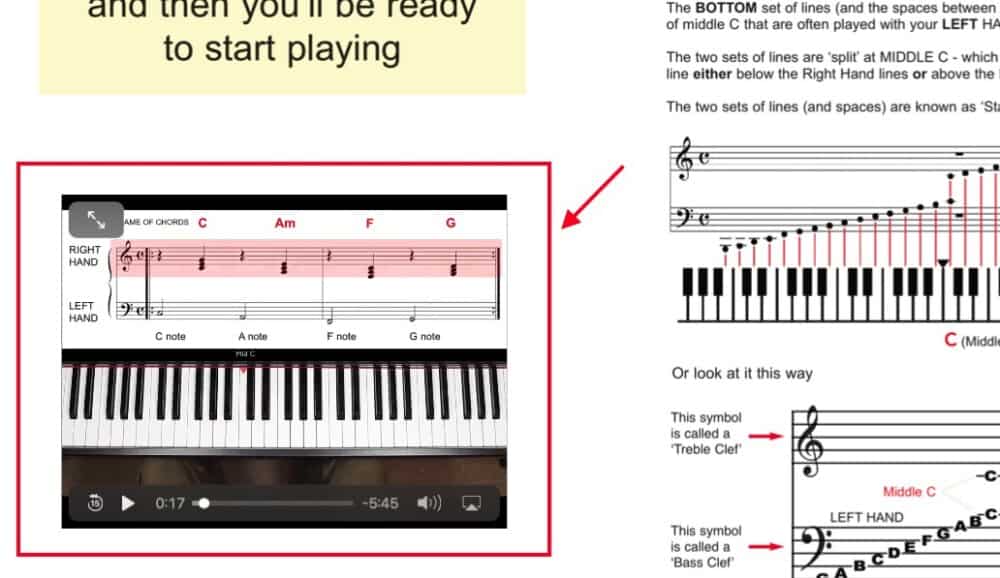
Due to the piano’s popularity (millions of people play the piano all over the world and many more start every day), there are many resources online to learn from. From online schools, and online tutors, to free YouTube videos, there’s absolutely no shortage for learning how to play.
I wrote about some of the free resources you can use in my article on how to learn by yourself, but the long and short of it is that there’s no reason why you can’t learn. I learned primarily through PianoForAll (their site here) which I already talked about briefly in the image above.
Initially, I took piano lessons as a kid, but as an adult, I looked for the fastest way to get back into it and PianoForAll was the one that kept coming up. There’s no doubt that it’s one of the more popular programs online and it’s super cheap. I’ll consolidate what I think are the best resources in the “Gear Mentioned” section down below.
Important Things to Note About The Piano
1) Some of the Same Things I Argued Here Can Be Said About Other Instruments
One thing that I should say before wrapping up this article is that some of the arguments made here could be said about other instruments. For instance, I imagine that the recorder is probably the easiest instrument to learn to play because there are only a few notes. I remember playing it when I was in elementary school.

 Written By :
Written By :